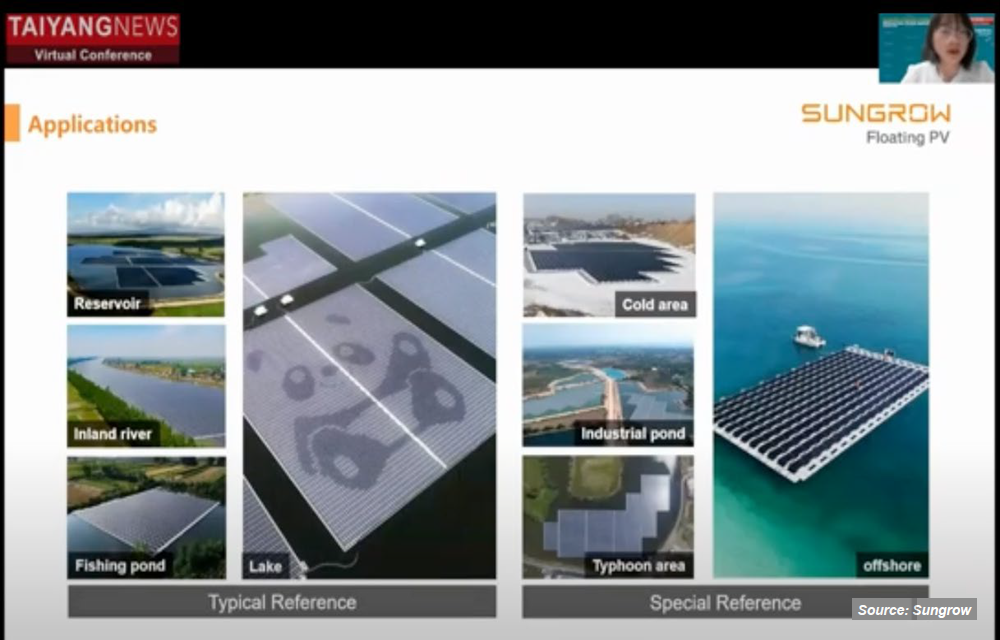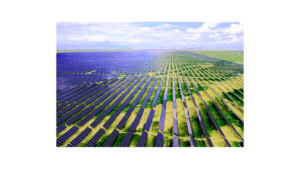- Floating solar PV (FPV) enables converting water bodies into solar power generation sites, highly benefited in land scarce areas
- FPV system are ideal for hybridization with hydropower stations bringing several synergies
- These systems have high modularity, require minimal site preparation, and can improve energy yield by up to 10% due to the cooling effect.
Floating PV is a promising technology with a number of advantages over land-based solar PV. As highlighted by market leader Sungrow from China at the TaiyangNews Advanced Solar Module Applications 2023 Conference, FPV systems have positive social effects, provide economic benefits from technical development, and offer environmental advantages. Sungrow FPV ’s Country Manager Julia Wang said in her talk on Recent Techno-Commercial Developments in FPV about the social aspect of floating solar that it can avoid conflicts of ground usage, which is particularly beneficial in developing countries where land is often scarce. It opens up new opportunities for scaling up solar generating capacity.
High modularity and elimination of site preparation involving civil works are some aspects of what Sungrow calls technical economy. The systems allow easy installation and deployment at sites with low anchoring and mooring requirements. It can also improve the energy yield by up to 10%, thanks to the cooling effect of water, said Wang. There is also a reduction in panel soiling as the dust deposition in such locations is relatively less. In terms of environmental benefits, because of the food grade material used, the floating structure has no negative effects on water quality. FPV installations also improve the water quality by suppressing algal growth. In areas with limited water resources, FPV can reduce water evaporation from the reservoirs, as the panels provide shade and limit the evaporative effect of wind; this can reduce evaporation by up to 40%. FPV systems are particularly beneficial with hybridization of FPV with hydropower plants. It not only brings several synergies, but the alliance maximizes the utilization rate of the existing power transmission infrastructure.
On the flip side, FPV also must master several challenges. FPV systems overall are currently more expensive to install and maintain than land-based solar PV systems. They require more sophisticated materials to make sure that floats do not have negative environment effects on water during their lifetime. Moreover, the operating conditions are more complex and need a higher degree of protection during harsh weather conditions, in particular when it comes to offshore applications. Being a relatively new technology, there is still some uncertainty about FPV’s long-term performance and environmental impact.
Though improving, the segment still suffers from the lack of standards and legislative frameworks, which are delaying its widespread adoption. Despite the challenges, the advantages of FPV seem compelling, as shown in an overview on the Environmental and Technical Impacts of Floating Photovoltaic Plants as an Emerging Clean Energy Technology published by Pouran et al. in iScience (see graph). More recently, in 2024, German renewables developer BayWa r.e. released a white paper on The Environmental Impacts of Floating Solar, which confirmed the positive effects of FPV systems on the environment, concluding that “Operational studies indicate FPV causes no noticeable negative impact on water quality, even at high water coverage ratio up to 50%. On the contrary, it can accommodate aquatic life and drive biodiversity enhancement.”
The text is an excerpt from the TaiyangNews Floating PV 2024 Report, which can be downloaded for free here.



